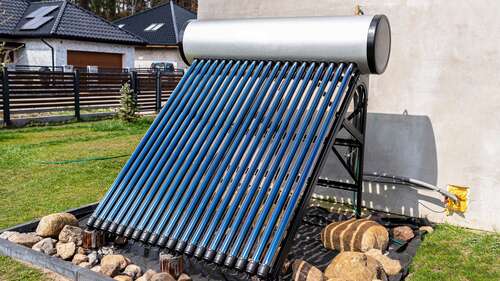
There are two main types of solar heating systems: active and passive. Active systems are more complex, using pumps, temperature sensors, electronics controls, and heat exchangers. They’re best for warm climates where there’s very little chance that the water will freeze during the night.
Passive systems are a lot simpler and combine the storage tank and the solar collector into one component. They are a little more suited to colder climates, and if you live in a cold area where water can freeze frequently during the winter, there’s a special type of system to deal with this. The different systems cost different amounts of money — but the professionals will find out what type you need, so you don’t need to worry about gaining a detailed understanding of the different systems.
The important part of each system is the same — the energy used to heat the water is collected by solar panels from the sun. The most important thing to understand about most solar setups is that they’re designed to be used during the day. While some systems store energy in a solar battery and use it at night, this isn’t always worthwhile. Instead, many systems have a backup water heater (basically the normal gas or electric one you use now) to draw at night. To make the most out of your solar water heater, you should use your washing machine, dishwasher, and shower primarily during the day.

